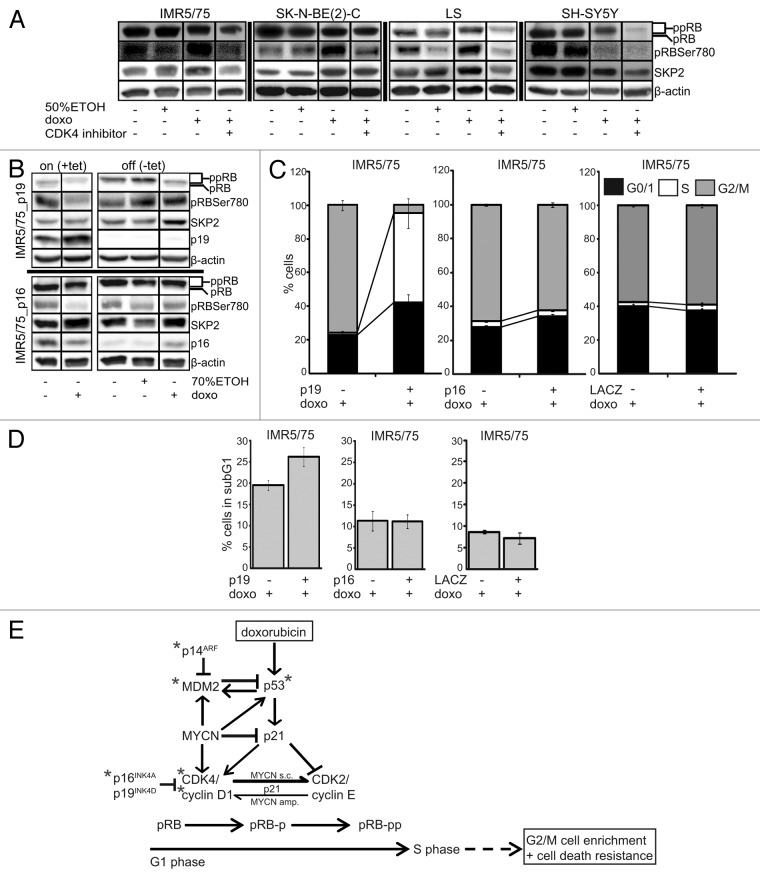Figure 5.p19INK4D, but not p16INK4A, abrogates CDK4-mediated pRB phosphorylation and cell cycle progression in MYCN-amplified neuroblastoma cells and sensitizes for cell death after drug-induced DNA damage. (A) Western blot of whole-cell protein extracts 48 h after treatment with doxo and/or the CDK4 inhibitor, RO0505124. Since RO0505124 was dissolved in 50% ethanol, we used this as control. Tetracycline (tet), dissolved in 70% ethanol, was added to the culture medium of IMR5/75 cells to induce p19-INK4D (= p19+), p16-INK4A ( = p16+) or lacZ. Doxo was added to the culture medium 48 h after induction. 70% ethanol was used as control. Western blot (B) and flow cytometric analyses of the cell cycle (C) or cell death (D) were performed 48 h after doxo treatment. IMR5/75 cells stably transfected with a tetracycline-inducible lacZ construct were used as control and showed neither cell cycle distribution nor cell death fraction changes upon induction of lacZ in untreated and doxo-treated cultures. Flow cytometry data are presented as mean ± SD of triplicates. (E) Schematic model of doxorubicin-induced DNA damage response in neuroblastoma cells. Note: *, genetic aberrations; s.c., single-copy; amp., amplified; pRB, hypophosphorylated; pRB-p, partially phosphorylated; pRB-pp, hyperphosphorylated.

An official website of the United States government
Here's how you know
Official websites use .gov
A
.gov website belongs to an official
government organization in the United States.
Secure .gov websites use HTTPS
A lock (
) or https:// means you've safely
connected to the .gov website. Share sensitive
information only on official, secure websites.
